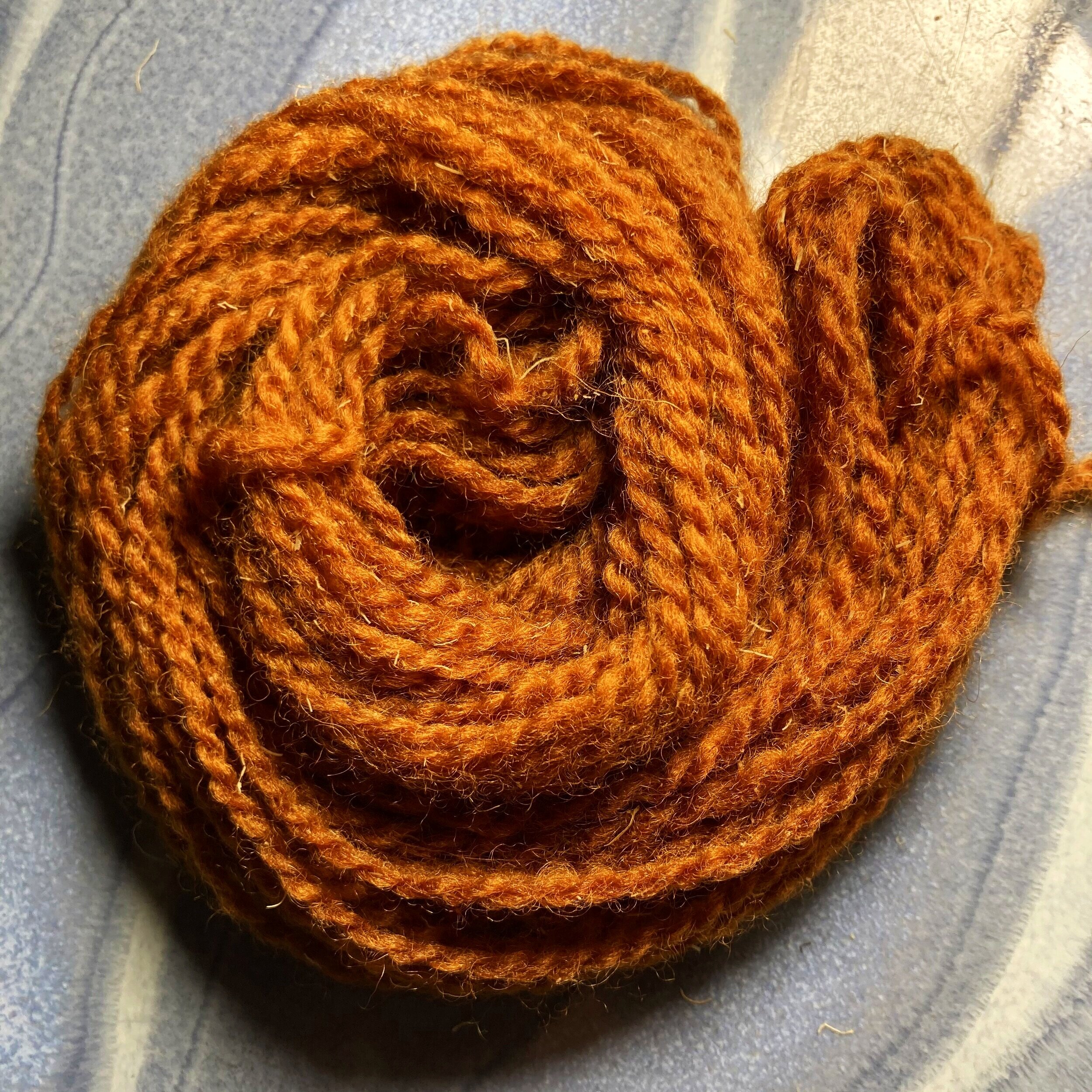Old Man Usnea
There are over 1000 species of Usnea described so far in the Parmeliaceae family. Generally they are pale grey-green lichens and quite common here on the west coast of British Columbia. It’s also known as old ban’s beard or beard lichen. I’m excited to test out a rumour about something unique Usnea is supposed to do in the dye pot (see Step 4 below).
TLDR: 33 grams of Usnea, 2 x 8 gram skeins of non-mordanted wool. Simmered for one day, one removed at 6.5 pH, pH dropped to 4, simmered one skein for one more hour gave a rufous brown.
Somewhere between Squamish and Whistler
We stopped to stretch our legs and I set about collecting the small amounts of Usnea that had fallen onto the path. I generally don’t collect from trees or lichen that’s fallen onto the forest floor as it’s decomposition adds back valuable nitrogen to the growing plants. Once house, I laid it out to dry and store until I was ready to move ahead.
Step 1: Weighing
All told, I had about 33 grams of lichens including the random plant matter and moss. I had been reading that an acidic bath helps bring out the orange tones so I chose two 8 gram wool skeins (16 grams in total). Having a 2:1 lichen to wool ratio (200% WOF) should allow me to get a richer colour and having the wool in two separate skeins means I can dye them both with regular tapwater, remove one and play around the with the pH to see if that shifts the colour at all.
Step 2: Prep the dye pot and add the fiber
I soaked the lichen for about an hour at a low simmer, chopping it up with a pair of scissors. At the same time, I pre-soaked the wool in warm water before adding it to the mesh paint bag (available at most paint stores).
Step 3: Bury the bag, check the pH
The benefit of the bag is you can have the fiber and the botanical matter in the pot at the same time but the fiber remains separated from it. I buried the bag under the lichen pieces but made sure it could move freely and I turned it over every two hours or so. I also checked the pH - 6.5 (slightly acidic), which is typical for water filtered passed so many conifers.
Step 4: Check the Colour
One unusual thing I’ve heard about dyeing with Usnea, is that the dye vat stays relatively clear while the yarn picks up the colour. I can confirm this is exactly what happened. The lichen only got paler- from a grey-green to all grey, the liquid stayed basically clear while the yarn started to darken.
Step 5: Yarn starts to darken
Throughout the day, I continued to simmer the pot for about two hours and then let it cool, as time went on, the colour deepened into a rich rufus brown. I kept it in for about 12 hours until I was happy with the shade.
Step 6: Cackle Manically
Because all the material used to give the colour can go straight into the composter. Woohoo.
Success!
I hear various species give different shades of brown and oranges. I want to try out more! It was magical to see the liquid in the pot stay clear though the yarn slowly changed colour.









